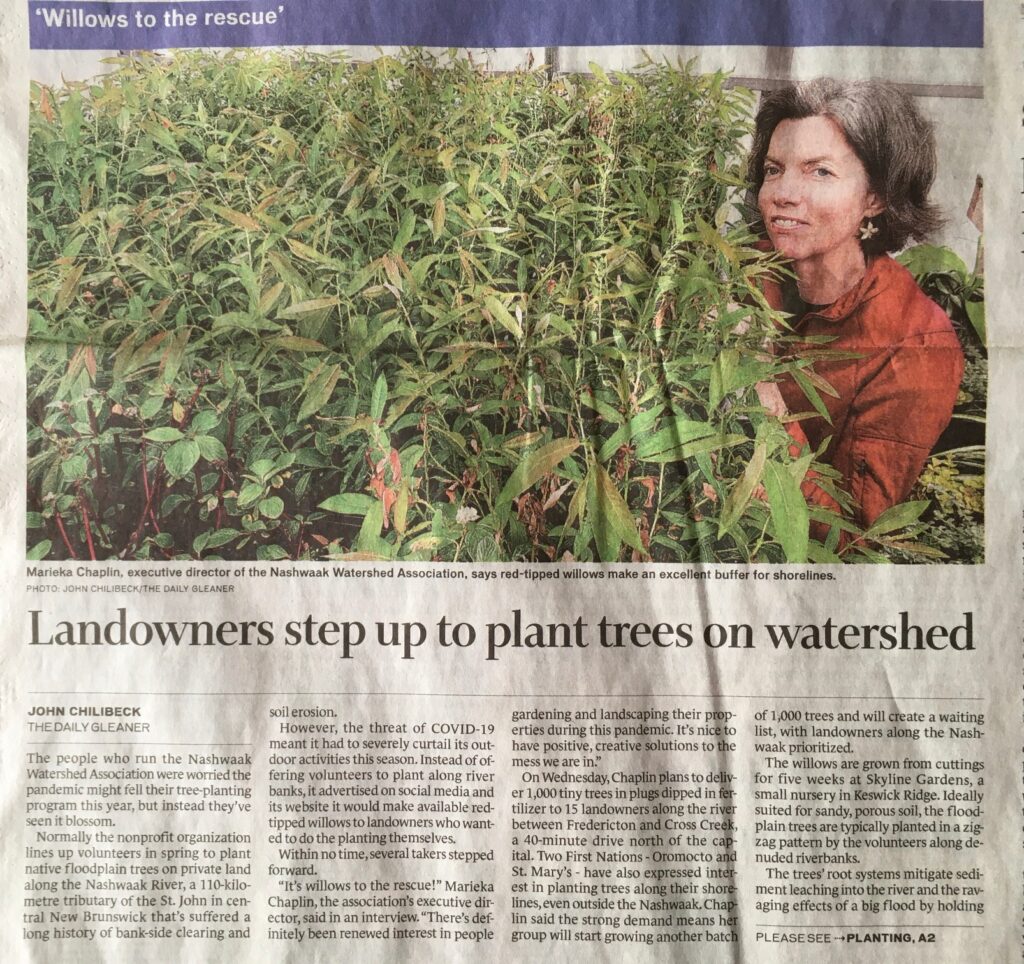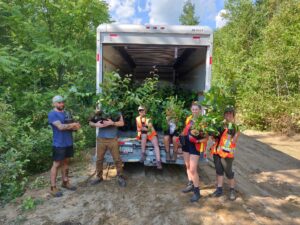Landowners step up to plant trees on watershed
May 5, 2020
By John Chilibeck, The Daily Gleaner
The people who run the Nashwaak Watershed Association were worried the pandemic might fell their tree-planting program this year, but instead they’ve seen it blossom.
Normally the nonprofit organization lines up volunteers in spring to plant native floodplain trees on private land along the Nashwaak River, a 110-kilometre tributary of the St. John in central New Brunswick that’s suffered a long history of bank-side clearing and soil erosion.
However, the threat of COVID-19 meant it had to severely curtail its outdoor activities this season. Instead of offering volunteers to plant along river banks, it advertised on social media and its website it would make available red-tipped willows to landowners who wanted to do the planting themselves.
Within no time, several takers stepped forward.
“It’s willows to the rescue!” Marieka Chaplin, the association’s executive director, said in an interview. “There’s definitely been renewed interest in people gardening and landscaping their properties during this pandemic. It’s nice to have positive, creative solutions to the mess we are in.”
On Wednesday, Chaplin plans to deliver 1,000 tiny trees in plugs dipped in fertilizer to 15 landowners along the river between Fredericton and Cross Creek, a 40-minute drive north of the capital. Two First Nations – Oromocto and St. Mary’s – have also expressed interest in planting trees along their shorelines, even outside the Nashwaak. Chaplin said the strong demand means her group will start growing another batch of 1,000 trees and will create a waiting list, with landowners along the Nashwaak prioritized.
The willows are grown from cuttings for five weeks at Skyline Gardens, a small nursery in Keswick Ridge. Ideally suited for sandy, porous soil, the floodplain trees are typically planted in a zigzag pattern by the volunteers along denuded riverbanks.
The trees’ root systems mitigate sediment leaching into the river and the ravaging effects of a big flood by holding back water like a sponge. The shade thrown by vegetation also helps keep the water temperature cooler, Chaplin said. By reintroducing more native plants in riparian zones, the group hopes to enhance and protect the water quality in the river, making it better for humans, fish and animals.
Survey work done by the group shows that 90 per cent of the land along the Nashwaak is fragmented by development, so there’s plenty of restoration work to do. Riverfront has traditionally been cleared by farmers who benefited from floodwaters adding nutrients to their soil and cottage and homeowners who wanted an open view of the water.
“It’s an ingrained part of the culture, clearing away riverbanks,” Chaplin said. “We’re trying to change that.”
This year, landowners have asked for anywhere between 25 and 100 trees each. The executive director said a good rule of thumb is to plant the vegetation with half a metre spacing, following a staggered, diamond pattern.
Since the program began 15 years ago, the association has planted more than 37,000 acorns, tree seedlings, and willow, dogwood and alder cuttings to restore the floodplain forest.
Here is the original article:


